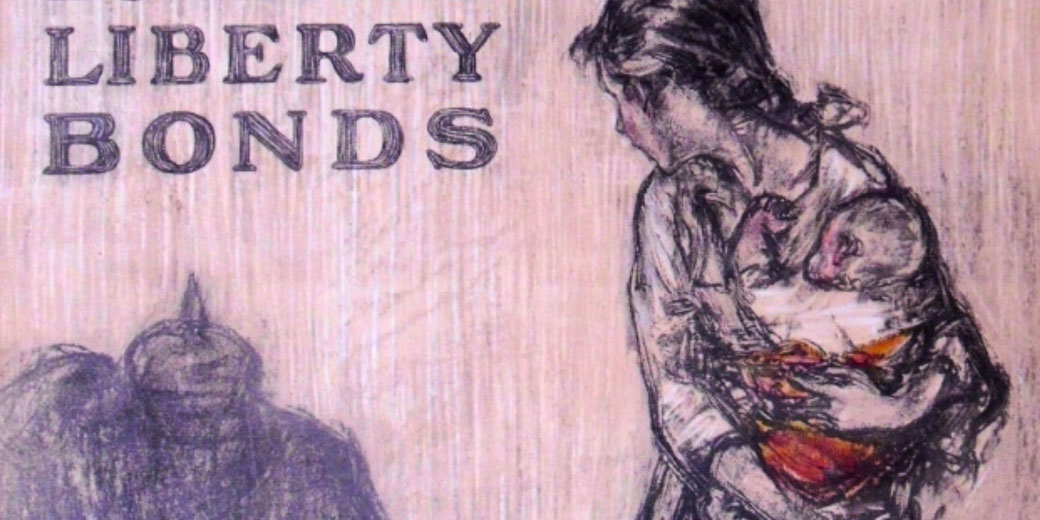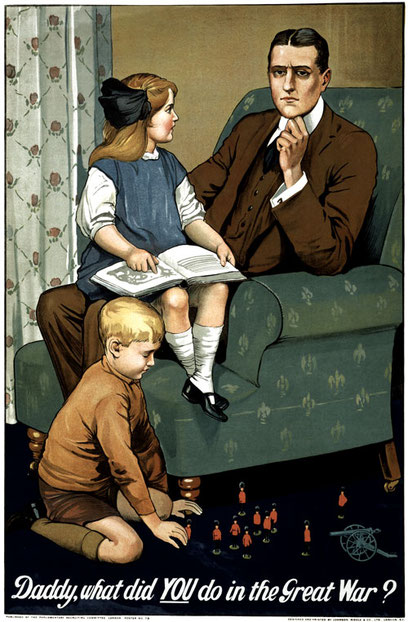How to interpret propaganda posters

Interpreting a visual source, like a propaganda poster, is very different to interpreting words on a page, which is the case with written sources.
Therefore, you need to develop a different set of skills.
What is a 'propaganda poster'?
Propaganda is an attempt to influence peoples’ opinions or behaviour through the use of specific images and words.
It usually gives limited information which is heavily biased in its presentation. Propaganda typically achieves its aims by generating an emotional reaction in the viewer.
For much of the twentieth century, public posters were a common way for governments to use propaganda to persuade their citizens.
They often relied upon simple images in order to manipulate people through fear or guilt.
Further information
Propaganda in the First World War:

Propaganda in the Second World War:

How do I understand the meaning of a propaganda poster?
Understanding what a historical propaganda poster means can be difficult for us because we did not live through the events that inspired them.
However, many propaganda posters rely upon a limited number of elements to persuade their audience. Once we learn those elements, we can begin to understand the specific message of a particular poster.
Propaganda Poster Elements
1. Stereotypes
It was common for posters to represent a particular group of people (usually in a very racist way) using stereotypes. A stereotype is an over-simplification of what a particular racial group looks like. For example, Chinese people in the 19th century were drawn with a long pony-tail in their hair. Propaganda uses stereotypes so that audiences can readily identify which people group is the target of the poster. Getting to know common stereotypes can be quite confronting for us, since they can be very racist in nature. However, once you become familiar with common forms of stereotyping, you can identify the appropriate people group being targeted in a particular poster.
Common Stereotypes:
Example:





People Group:
Germans
Chinese
Japanese
Australians
Jewish People
Exaggerated Features:
Pickelhaube (the spiked helmet), gorilla-like body
Long pony-tail, narrow eyes, thin moustache, traditional Chinese clothes and hat, two large front teeth
Circular glasses, narrow eyes, toothy grin
Slouch hat, clean-shaven, khaki clothes
Large nose, kippah (Jewish prayer cap)
2. Symbolism
Just like political cartoons, propaganda posters use simple objects, or symbols, that the general public would be familiar with. These symbols are used to represent important concepts or ideas. For example, using a ‘skull and crossbones’ could represent ‘death’ or ‘danger’. While you’re interpreting a poster, identify any symbols and try to work out what concept the image is meant to represent.
Here are some common symbols used in propaganda, along with their common meanings:
| Symbol | Meaning(s) | Symbol | Meaning(s) | Symbol | Meaning(s) |
| Anchor | safety, security | Bear | Russia | Bulldog | Great Britain |
| Chains | imprisonment, slavery | Crowd of People | unstoppable force | Cupid | love |
| Dollar Sign | money | Door/gate | access, entry | Dove | peace |
| Eagle | America | Grave Stone | death | Grim Reaper | death |
| Hammer & Sickle | communism | Hare | carelessness, arrogance | Hourglass | limited time |
| Imperial Dragon | China | Kangaroo | Australia | Lamb | innocence |
| Octopus | greed | Ostrich | refusal to hear bad news | Owl | wisdom |
| Puppet | being Controlled | Rainbow | hope, future | Rat | infection, disease |
| Red Star | communism | Rose | love | Samurai | Japan |
| Sheep | blind trust | Skull | death | Snake | evil, temptation |
| Spider/web | control, entrapment | Spiked Helmet | German | Star of David | Jews or Israel |
| Stars and Stripes | America | Swastika | Nazis, Nazism | Throne | power |
| Turtle | slow, vulnerable | Uncle Sam | America | Wall | division, separation |
| Woman with flag | a specific country | Woman with scales | justice | Young Child | naivety, innocence, victim |
Posters will often include short sections of information: either statistics or statements. This information is meant to provide the audience with just enough data for them to draw the conclusion the creator wanted them to make. When you are looking at the poster, it is worth asking whether the information provided is completely accurate or what other information has been left out. Finally, try to work out why the propaganda wanted the audience to know about the specific information they have presented. For example, how does this information help persuade the audience?
Posters will try to connect directly with their audiences though a number of techniques. They will either use the second person pronoun "you" in the text, ask a rhetorical question that the audience is meant to think about, or it will have people in the poster looking directly at the viewer. Propaganda does this in order to make the audience feel like they need to respond in some way.
Propaganda will try to play on a person's emotions in order to prompt them to respond. The most frequent emotional responses posters try to generate are:
- guilt (e.g., making the audience feel like they have failed),
- patriotism (e.g., appealing to the love of their country),
- fear (e.g., that if they don't act, something bad will happen),
- or shame (e.g., that they are weak, cowardly or selfish).
6. Call to Action
Almost every propaganda poster has a statement about what their audience should do after seeing the poster. For example: 'Enlist Today!' or 'Buy War Bonds'. The call to action is often the best way to determine the poster's purpose and intended audience.
How do I write an interpretation?
Once you have deconstructed the poster, you can start creating your explanation. To do so, answer the following questions:
- Who or what is represented by the stereotypes and symbols?
- What information is provided by the text in the poster?
- How does the poster try and connect directly with the audience? (Using "you", asking a question, or by 'looking at the audience'?)
- What does the 'call to action' say?
- What emotion is the viewer supposed to feel? (e.g. Shame, guilt, patriotism, etc.)
Once you have answered these questions, you are ready to answer the final one:
- What did the propaganda want their audience to believe and do?
What do I do with my interpretation?
Identifying the message of a propaganda poster shows that you understand the primary source, which means that you can use it as an indirect quote in your historical writing.
Your interpretation can also help you in your analysis and evaluation of the source. For example, identifying the source's message can help you ascertain:
-
The purpose of the propaganda
- The intended audience of the poster
- The accuracy of the information presented in the image
Example

Parliamentary Recruiting Committee. (1915). 'Daddy, what did YOU do in the Great War?'. London. © IWM (Art.IWM PST 0311). Source: https://www.iwm.org.uk/collections/item/object/17053
Demonstrating interpretation of propaganda posters in your writing:
This propaganda poster produced by the British government in 1915 sought to persuade British citizens to enlist for military service. It does this by employing a range of propaganda techniques. First of all, the main character is an idealised middle class British family man. The use of this stereotypical character is an attempt to connect with British middle-class men who had not yet joined the war effort. Secondly, the poster uses the symbolism of the toy soldiers, which the young boy is depicted as playing with. The fact that the man's son is more impressed with symbols of war than his own father begins to play on the audience's emotions. Thirdly, the text that accompanies the image, which is spoken by the daughter, inquires about the man's role in the war. The use of the second person pronoun of "you" is a clear attempt to engage personally with the audience. This is reinforced by the fact that the man's eyes are looking directly at the viewer. Therefore, although the girl is talking to her father, the poster intends to directly address the viewer. The clear intent is to make the audience the target of the question so that they will wonder what role they will play in the contemporary conflict. All of these techniques combine with the intention of generating the feelings of shame and guilt in the viewer. The propaganda hopes that young men will feel embarrassed to admit to their future children that they were 'too cowardly' to join the war effort. Even though there is no explicit 'call to action' for the viewer on the poster, the tacit expectation is that the guilt would result in young men enlisting to fight in the hopes of being able to allay the shame produced by the picture. The overall message produced by the propaganda poster is that real men will enlist in the war effort in the belief that their future children will be proud to know that their fathers did their part.
What do you need help with?
Download ready-to-use digital learning resources
Copyright © History Skills 2014-2025.
Contact via email
With the exception of links to external sites, some historical sources and extracts from specific publications, all content on this website is copyrighted by History Skills. This content may not be copied, republished or redistributed without written permission from the website creator. Please use the Contact page to obtain relevant permission.





